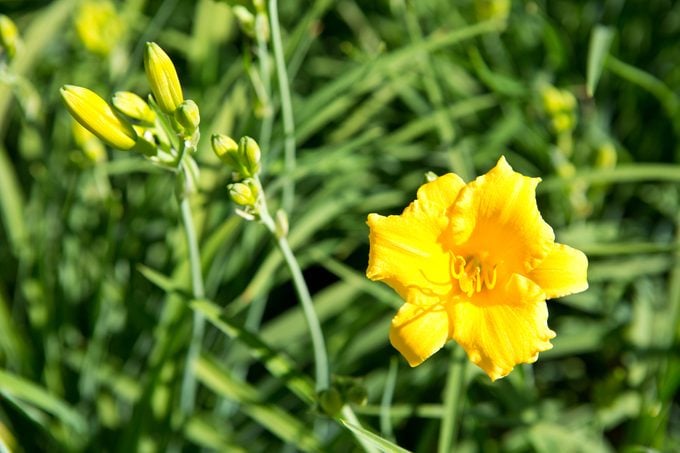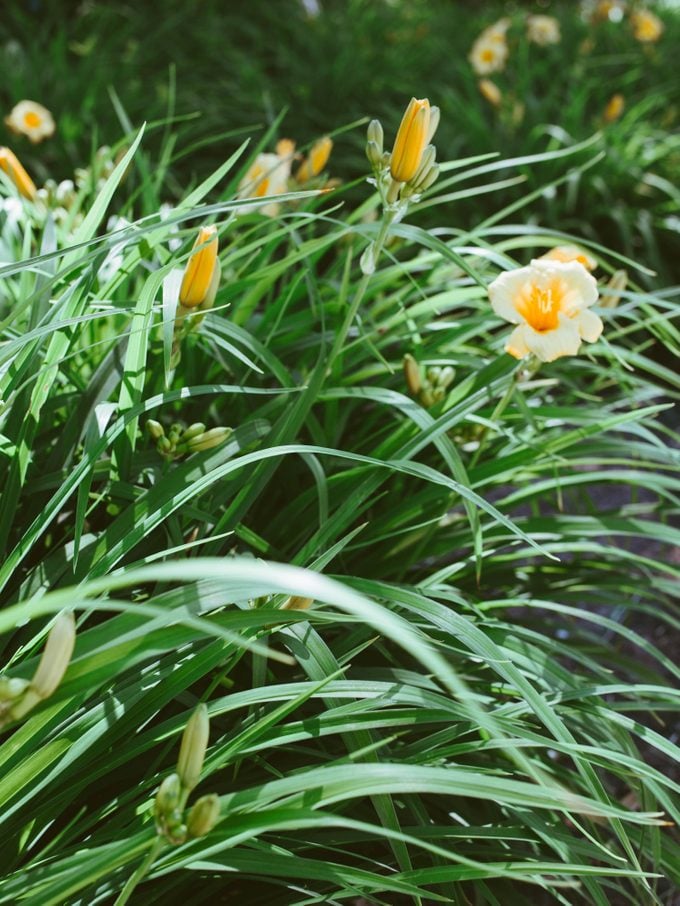Stella D’Oro Daylily Is a Resilient Garden Star
Updated: May 23, 2023
If you need a reliable bloomer for sunny borders, grow Stella d'oro daylily. These easy-care perennials put on a fantastic flower show.
Stella D’Oro Daylily Care and Growing Tips

- Common name: Stella d’oro daylily
- Scientific name: Hemerocallis x ‘Stella de Oro’
- Growing zones: 3 to 9
- Light needs: Full sun to partial sun
- Soil: Moist, well-draining
- Attracts: Butterflies
With a name like Stella d’oro daylily, you know you’re getting a dazzling garden star. These flowers are beloved backyard classics for a reason. In fact, it seems like there’s almost no garden problem that the easy-care perennials can’t solve.
These resilient yellow flowers will bloom in hot sunny borders, on slopes, and even thrive near black walnut trees or salted roads and driveways. However, they will not be happy in the shade. They are ignored by rabbits and most insect pests and not often affected by diseases, as long as they get enough light. These daylilies are known to be drought tolerant but will flower best with some supplementary water in the hottest weather conditions.
For best results, plant them in spring or early fall, with enough time for the plants to get established before the first frost.
Daylily care 101: get expert growing tips.
Flowers and Foliage

Award-winning Stella d’oro is known as a “mini” sized daylily, with fragrant flowers that are smaller than 3 inches. While the individual flowers only live for one day, the plant reblooms for several weeks throughout the summer.
Don’t miss lovely pictures of lilies you need to see
Plant them in groups for maximum color and impact, just make sure to give them space to grow. he green, grasslike foliage reaches 10 to 12 inches tall and wide. Divide each clump every few years for more free plants.
For stunning contrast, pair them with sun loving purple flowers such as Russian sage, coneflower, salvia or catmint.
True lily vs daylily: what’s the difference?




















